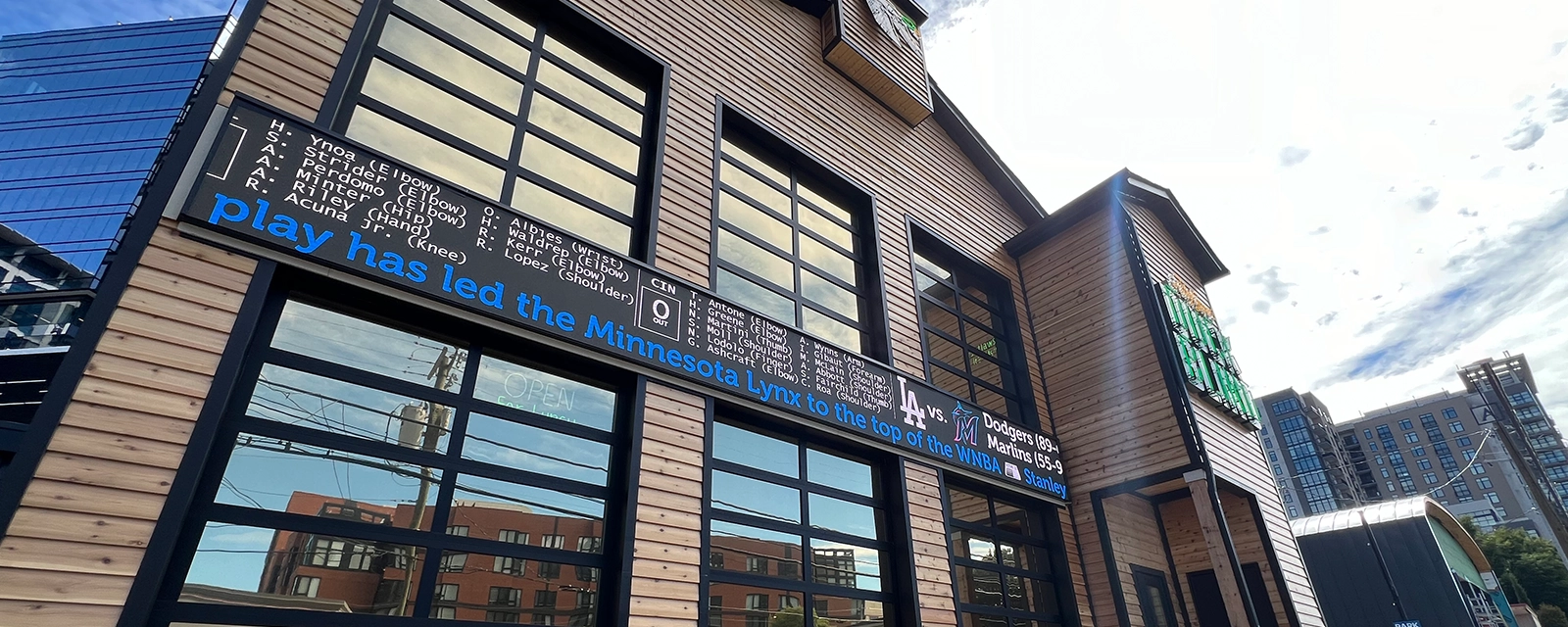Why LED Video Displays are Superior to Traditional Static Signage
By Trust Fall Staff
In today’s fast-paced, technology-driven world, businesses and organizations are constantly seeking ways to capture attention, engage audiences, and deliver messages effectively. One area where this shift is particularly visible is in the transition from traditional static signage (like printed graphics and manufactured signs) to modern digital signage solutions, such as LED video displays.
LED video displays are rapidly becoming the go-to solution for businesses and advertisers alike. They offer numerous advantages over traditional static signage, from enhanced visibility and flexibility to cost-effectiveness and interactivity. Here’s why LED video displays are the future of digital signage, and why they’re superior to static methods.
1. Dynamic Content and Flexibility
One of the most significant advantages of LED video displays is their ability to showcase dynamic content. Unlike static signs that display a fixed message or image, LED displays allow businesses to broadcast a wide range of content types, from videos and animations to real-time updates and social media feeds.
This level of flexibility means that businesses can tailor their messaging for different audiences, seasons, or promotions with ease. For example, a retail store can promote sales in the morning, display product information in the afternoon, and highlight upcoming events in the evening – all from the same display. In contrast, traditional signs would need to be replaced or manually updated, which is time-consuming and costly.

2. Increased Visibility and Attention-Grabbing Power
In a sea of advertisements and information, grabbing attention is crucial. LED video displays excel at this. They are bright, vibrant, and capable of displaying high-resolution, eye-catching visuals. The combination of motion, color, and light makes them impossible to ignore, especially in busy or high-traffic areas like shopping malls, airports, or public squares.
Static signage, by comparison, often fades into the background, especially in environments cluttered with competing advertisements. Printed graphics are limited by their size, color range, and lack of movement, making it harder to stand out. LED displays’ inherent brightness and adaptability to outdoor and indoor conditions ensure maximum visibility, even in bright sunlight or low-light settings.
3. Cost Efficiency Over Time
While the upfront cost of an LED video display may be higher than that of a traditional sign, the long-term cost savings are significant. Static signage requires frequent reprints and replacements as campaigns change or as wear and tear takes its toll. With an LED display, there’s no need to print or physically swap out signage. Content updates can be made remotely with just a few clicks, saving businesses time and money on materials and labor.
Additionally, LED technology is energy-efficient, with modern displays consuming far less power than older, less-efficient lighting systems. When considering the long-term savings in operational and maintenance costs, LED video displays offer a much better return on investment.
4. Environmental Sustainability
In an age where sustainability is increasingly important, LED video displays present a greener alternative to traditional signage methods. Static signs often rely on paper, plastic, and other non-recyclable materials that contribute to waste and environmental degradation. On the other hand, LED displays minimize the need for physical materials and eliminate the environmental impact associated with printing, transportation, and disposal of static signage.
Moreover, modern LED displays are designed to be energy-efficient, using less power than other forms of illuminated signage, such as neon or fluorescent lighting. Their longevity also means fewer replacements, further reducing waste and energy consumption over time.
5. Real-Time Updates and Interactivity
One of the most innovative features of LED video displays is the ability to deliver real-time updates. Whether you want to announce an immediate sale, share breaking news, or update your social media feed, LED displays can respond instantly. This is impossible with static signage, which requires pre-planning and doesn’t allow for any last-minute changes.
Interactivity is another game-changing aspect of LED displays. Many modern systems can be integrated with touchscreens, sensors, or external data sources to create a more engaging experience. For example, airports can use LED displays to provide real-time flight information, while retailers can incorporate touchscreens to allow customers to browse product catalogs or access personalized promotions.
6. Durability and Weather Resistance
Outdoor static signage is prone to damage from weather elements, such as rain, wind, or sunlight, which can lead to fading, tearing, or other forms of degradation. LED video displays, on the other hand, are designed with durability in mind. They are built to withstand harsh weather conditions, whether they’re installed outdoors or indoors.
Most outdoor LED displays are weatherproof and equipped with advanced technology to combat moisture, dust, and temperature fluctuations. This makes them a reliable choice for businesses seeking a long-lasting signage solution, no matter the environment.
Conclusion
LED video displays are more than just a modern alternative to traditional signage – they are a superior solution for businesses looking to capture attention, improve engagement, and reduce long-term costs. The dynamic nature of LED displays, combined with their cost-efficiency, sustainability, and real-time capabilities, makes them a clear winner in the world of digital signage. As businesses continue to evolve in their advertising and communication strategies, it’s clear that LED video displays will be at the forefront of this transformation.
If you’re considering upgrading your signage, there’s no better time to explore the endless possibilities of LED video displays.

